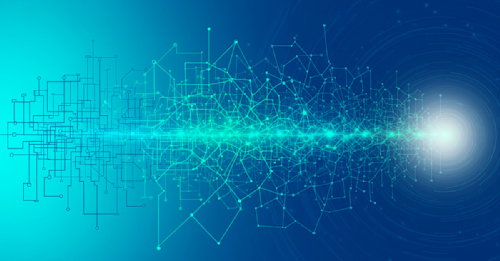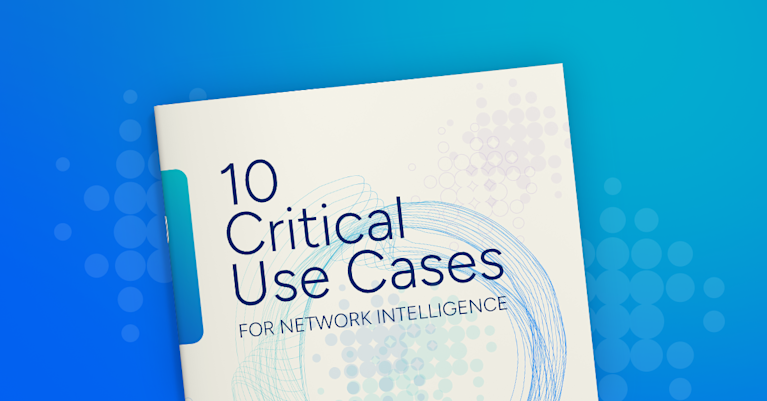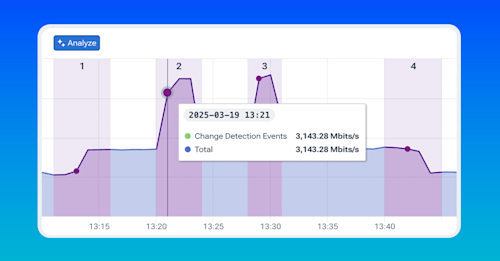
Summary
Agentic AI is the next evolution in network management, moving beyond simple automation to intelligent systems that can reason, plan, and act autonomously. Justin Ryburn, Kentik Field CTO, highlights how this shift automates expertise, enables proactive problem-solving, and empowers human engineers for strategic innovation.
For years, the promise of automated network management has captivated IT and business professionals alike. We’ve seen a proliferation of tools designed to script repetitive tasks, trigger alerts based on predefined thresholds, and even perform basic corrective actions. While these advancements have undoubtedly brought efficiency gains, it’s time to acknowledge a crucial truth: many of these “automations” are little more than sophisticated scripts. They are useful, certainly, but not truly intelligent. The real revolution in network management isn’t just about automating tasks; it’s about automating expertise.
This brings us to the dawn of a new era: the rise of agentic AI in networking. Imagine a network not merely reacting to events, but actively reasoning, planning, and taking autonomous action across vast, complex environments – much like a seasoned human expert, but at an unprecedented scale and speed. This isn’t just AIOps; this is agentic network intelligence.
The limitations of current network automation
The vast majority of network “automation” today operates on a simple premise: IF X happens, THEN do Y. While this conditional logic is effective for well-defined, predictable scenarios, it falls short when faced with the inherent dynamism and unpredictability of modern networks. These scripts lack the ability to understand context, infer intent, or adapt to novel situations.
Agentic AI, however, fundamentally shifts this paradigm. An agentic system doesn’t just execute predefined instructions; it possesses an internal model of the network, an understanding of its goals, and the capacity to formulate plans to achieve those goals. This means moving beyond simple task execution to actually embedding and replicating expert-level decision-making. Think of an agent that, upon detecting a performance degradation, doesn’t just alert an engineer, but autonomously investigates the most likely root causes, consults various data sources, and then initiates a series of corrective actions, all while keeping a human in the loop for approval or override.
Connecting tools, not just data: The power of collective intelligence
The modern network is a sprawling ecosystem of diverse tools – monitoring platforms, security solutions, configuration managers, and more. A common challenge is the sheer volume of data and alerts these tools generate. Anomaly alerts, while vital, often become mere noise without the context needed to pinpoint root causes and recommend effective solutions.
Agentic networks address this by fostering genuine collaboration between these disparate tools. Instead of simply connecting data streams, agentic AI creates an environment where these tools can “think together.” An agent observing a sudden spike in latency on a specific application might query a network agent for any recent routing changes, an infrastructure agent for hardware health, and a configuration agent for recent updates. By synthesizing insights from multiple sources, the agent can form a holistic understanding of the situation, allowing it to move beyond simple correlation to true causality. This integrated intelligence allows for a far more precise and effective response to complex issues.
Learn how AI-powered insights help you predict issues, optimize performance, reduce costs, and enhance security.

Beyond monitoring: True proactive management requires reasoning
Predicting issues before they cause impact is the holy grail of network management. Yet, traditional monitoring often falls short, providing a retrospective view rather than a truly predictive one. True proactive management demands more than just observing trends; it requires sophisticated reasoning capabilities.
Agentic AI systems can analyze complex interdependencies within the network, learning the intricate relationships between applications, infrastructure components, and user behavior. They can build dynamic models of expected network behavior, allowing them to detect subtle deviations that precede critical failures. For instance, an agent might identify a gradual increase in interface errors on a link facing a server, not as an isolated event, but as a precursor to a potential problem affecting a critical business application, taking preventative measures before any impact is felt. This ability to understand context and anticipate problems is what truly elevates network management from reactive firefighting to strategic foresight.
Self-healing, self-optimizing, self-securing: The autonomous network
The future network isn’t just self-healing; it’s self-optimizing and self-securing. Agentic AI empowers the network to learn and adapt autonomously, reducing and ultimately eliminating the need for constant human intervention in routine tasks.
Imagine a network that continuously monitors traffic patterns, identifies congestion points, and dynamically reroutes traffic to maintain optimal performance. Or a network that, upon detecting a novel security threat, automatically isolates affected segments, updates firewall rules across the entire infrastructure, and deploys new intrusion detection signatures – all without human intervention. This level of autonomy frees up valuable human resources, allowing them to focus on higher-level strategic initiatives and innovation rather than getting bogged down in the minutiae of daily operations.
Elevating human experts: A partnership for innovation
A common concern with advanced automation is the fear of human obsolescence. However, with agentic AI, the opposite is true. Human experts aren’t being replaced; they’re being elevated. By offloading the burden of routine monitoring, troubleshooting, and optimization to intelligent agents, skilled engineers are freed to focus on strategic innovation, architecting future-proof networks, and tackling truly complex, novel challenges that require human creativity and intuition.
Agentic frameworks also democratize complex insights. While the agents handle the heavy lifting of data analysis and decision-making, they can present their findings and proposed actions in a clear and easily understandable format, allowing a broader range of personnel to gain insights and contribute to network stability and performance. This creates a powerful partnership between human expertise and machine intelligence.
Why this matters: The power of agentic network intelligence
The shift to agentic network intelligence is more than just an incremental improvement; it’s a fundamental transformation in how we manage and interact with our networks. It moves us beyond simple automation – which is about executing predefined tasks – to a realm where networks possess embedded expertise, the ability to reason, plan, and act autonomously.
This profound change unlocks unprecedented levels of efficiency, resilience, and security. It enables a truly autonomous and optimized network, one that not only identifies and fixes problems but anticipates and prevents them. Crucially, it allows human experts to transcend the reactive cycle of network management, empowering them to focus on higher-value tasks, strategic innovation, and the continuous evolution of the digital infrastructure that underpins our modern world. The future of networking isn’t just automated; it’s agentic, intelligent, and profoundly liberating.


